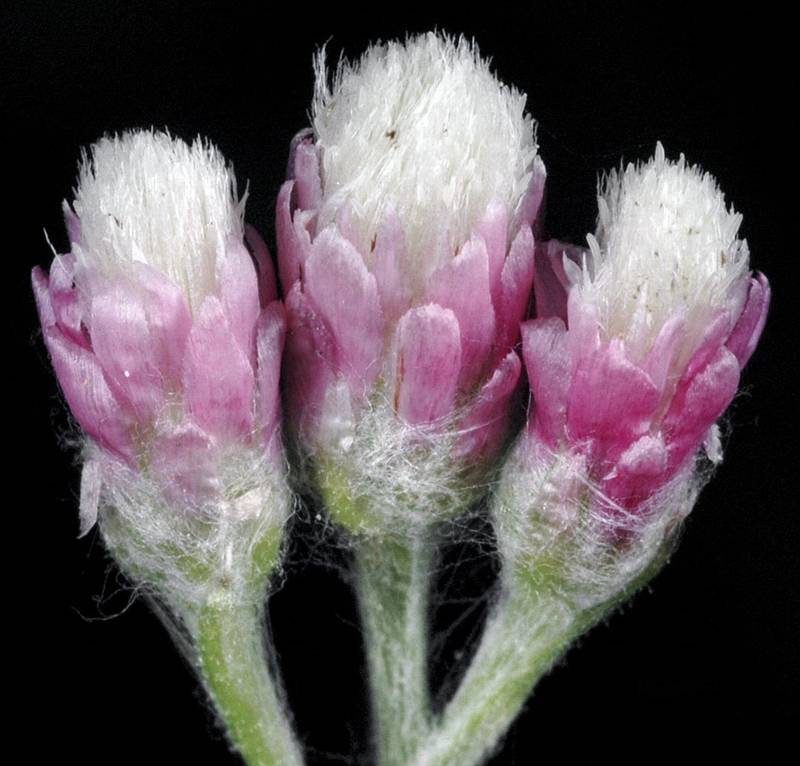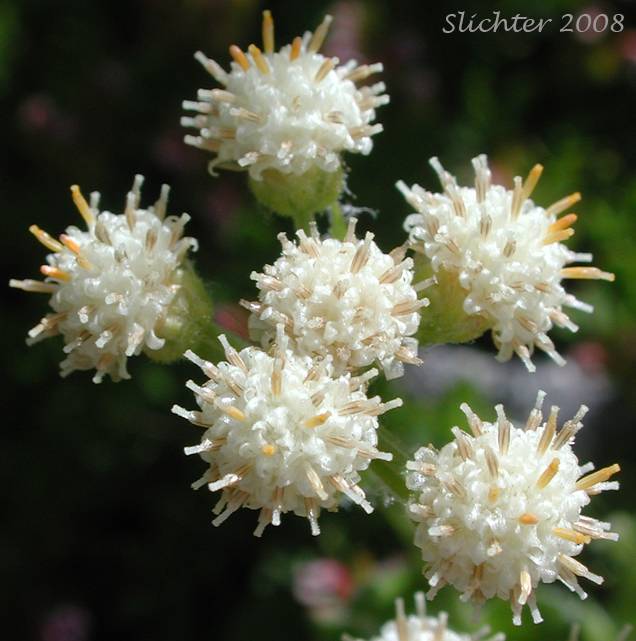|
|
Howell's pussytoes
|
| Dioecious, mat-forming, stoloniferous perennial 5-40 cm. tall; stolons up to 10 cm. long, decumbent; upper surface of the stems with stalked glands, the hairs white or purple. |
Perennial with usually leafy stolons and upright stems 1.5-4 dm. tall. |
Leaves 1-nerved; upper surface of the leaves covered with silvery-white hairs; basal leaves spatulate or oblanceolate with a wedge-shaped base; cauline leaves linear, alternate. |
Basal leaves spatulate, oblanceolate or obovate, persistently white-woolly beneath and glabrous and green above, up to 2 cm. wide; cauline leaves few, linear and sessile. |
Heads several in a sub-capitate cyme; pistillate involucres 4-10 mm. long; scarious portion of the involucre bracts white, straw-colored or light yellow. |
Heads several in a crowded inflorescence; pistillate involucres 6-9 mm. high, the bracts narrow and long-pointed, the scarious portion dingy whitish; pappus surpassing the stigmas; staminate plants very rare in our range. |
Achene. |
Achene terete. |
|
|
|
|
|
The green upper surface of the leaves separates Antennaria howellii from all other species except A. racemosa. The latter usually has an open inflorescence, broader and larger leaves, and glands on the upper stem. |
| June-August |
May-July |
| Dry to moist habitats, including meadows, ponderosa pine forest openings, rocky slopes, and floodplains from the lowlands to the alpine. |
Rocky or sandy slopes, dry to moist grasslands, and forest openings at low to middle elevations. |
Occurring on both sides of the Cascades crest in Washington, but more common east of the crest; Alaska to California, east to the Rocky Mountains and northern Great Plains, Great Lakes region, and eastern Canada.
|
Occurring on both sides of the Cascades crest in Washington; Yukon Territory to California, east to the Rocky Mountains, northern Great Plains, Great Lakes region, and northeastern North America.
|
| Native |
Native |
| Not of concern |
Not of concern |
A. alpina, A. anaphaloides, A. corymbosa, A. dimorpha, A. flagellaris, A. geyeri, A. howellii, A. lanata, A. luzuloides, A. media, A. microphylla, A. monocephala, A. parvifolia, A. pulcherrima, A. racemosa, A. stenophylla, A. umbrinella |
A. alpina, A. anaphaloides, A. corymbosa, A. dimorpha, A. flagellaris, A. geyeri, A. lanata, A. luzuloides, A. media, A. microphylla, A. monocephala, A. parvifolia, A. pulcherrima, A. racemosa, A. stenophylla, A. umbrinella |
|
|
| |



